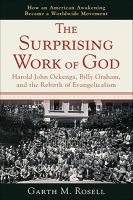 There is a resurgence of interest in how evangelicalism–today’s version–began. What are its roots? How did it emerge and grow? Several individuals played key roles in the growth of this “new” evangelicalism. One of the central leaders was Boston’s Harold John Ockenga, pastor of the historic Park Street Congregational Church. Ockenga also helped found Fuller Theological Seminary, Gordon-Conwell Theological Seminary, the National Association of Evangelicals, and Christianity Today. Garth Rosell’s The Surprising Work of God: Harold John Ockenga, Billy Graham and the rebirth of Evangelicalism examines the birth and development of modern American evangelicalism–its history, personalities, and institutions. The history of that time is seen through the window of the life, ministry, and writings of Ockenga and his long friendship with Billy Graham. This book will be of value to anyone with an interest in the American Christianity of the last century. Rosell utilized the records of the National Association of Evangelicals (SC-113) for this publication.
There is a resurgence of interest in how evangelicalism–today’s version–began. What are its roots? How did it emerge and grow? Several individuals played key roles in the growth of this “new” evangelicalism. One of the central leaders was Boston’s Harold John Ockenga, pastor of the historic Park Street Congregational Church. Ockenga also helped found Fuller Theological Seminary, Gordon-Conwell Theological Seminary, the National Association of Evangelicals, and Christianity Today. Garth Rosell’s The Surprising Work of God: Harold John Ockenga, Billy Graham and the rebirth of Evangelicalism examines the birth and development of modern American evangelicalism–its history, personalities, and institutions. The history of that time is seen through the window of the life, ministry, and writings of Ockenga and his long friendship with Billy Graham. This book will be of value to anyone with an interest in the American Christianity of the last century. Rosell utilized the records of the National Association of Evangelicals (SC-113) for this publication.
All posts by David Malone
How I met Muriel on the Internet.
Relationships emerge in the strangest of places. Decades ago computer dating came upon the scene as a solution for many as a way to meet people. Today, folks spend hours in chat rooms hectically typing away as fast as their little fingers can with bursts of LMK, BTW, and IMO. A secret code of friendship goes on and on with the chiclets of keystrokes.
I didn’t meet Muriel in a chat room as increasingly more and more individuals have met their spouses in this Internet age. I met Muriel on Ebay. Ebay is that vast auction house that has no address other than www.ebay.com. Here thousands upon thousands of new, used, and abused items go on the auction block each day. Eager buyers bid on items ranging from a Donny Osmond Signed Shirt from the Rosie Show to a rare Johnson & Johnson Dental Floss Tin. I met Muriel amidst this wonder.
I met Muriel as I’ve had many others. As the College Archivist every now and then I will prowl the Internet and Ebay for wonders from Wheaton’s past. I search for websites about Wheaton and by our alums. Every few weeks or months I travel to Ebay and plug in “wheaton college.” Often I’m given a listing of used books by faculty or alums of Wheaton. At other times I browse through a list of items relating to the “other” Wheaton, the one in Massachusetts. These items have ranged from coffee mugs to a Public Safety patch emblazoned with the school’s motto, adopted in 1912, “That they may have life, and may have it abundantly.”
Not too long ago I made my usual trip to Ebay and typed in “wheaton college.” To my surprise I saw a listing with the title “Antique Letters (3) and Envelope-Genealogy.” This was my introduction to M. Muriel Ramsay ’26. I quickly placed a bid for the current asking price of $4.00. Admittedly I was bidding against someone who may have had a tie to the letters or to Wheaton, but I quickly rationalized that if the college owned the letters they would become available to others in the college’s archives. I waited with anticipation for the auction to close. You see I had missed out on a large cache of diaries and letters, over 1,000, from two students in the 40s because I hadn’t acted quickly enough. Well, the auction closed and with the addition of a few dollars for postage the letters were on their way from an “Ebayer” in Sioux Falls, SD.
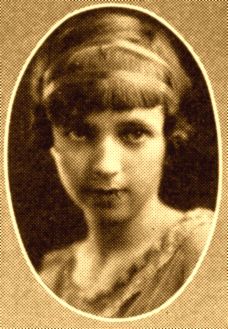 Muriel arrived in the hustle and bustle of an average working day amidst the stacks and stacks of paper that can often accumulate in the Archives’ mailbox, let alone accumulate in the Archives itself. With a level of disinterest I opened a non-descript brown-paper envelope to the surprise of “Antique Letters (3) and Envelope-Genealogy.”
Muriel arrived in the hustle and bustle of an average working day amidst the stacks and stacks of paper that can often accumulate in the Archives’ mailbox, let alone accumulate in the Archives itself. With a level of disinterest I opened a non-descript brown-paper envelope to the surprise of “Antique Letters (3) and Envelope-Genealogy.”
Let it be known that I was not previously introduced to Muriel. I didn’t know her from Adam, or should that be Eve. At the bidding I simply knew that these were three letters written by a Wheaton student in the 1920s to “Vi” and “Jo” in Milwaukee (actually Misses Violet and Johanna Krejci). When they arrived it was clear that my work had just begun.
Who was Muriel? At first reading of the letters with reference to Williston Hall I surmised that it could be Muriel Fuller, ’23, classmate and friend of Margaret Landon. However, as I dug into the other letters they were dated in 1924,too late for Muriel Fuller. Now the chase was on! Using handy resources created by past archivists Thad Voss and Mary Dorsett I searched a listing of students from past college catalogs. This resulted in three possible Muriels. One was Muriel Fuller and the others were Muriel Curtis and M. Muriel Ramsay. Muriel Curtis had also enrolled in the Conservatory, as well as the College. Usually at that time Conservatory students lived locally, though not always. I then looked in the 1922 catalog to see where Muriel Ramsay was from since the older catalogs listed each student’s hometown. Muriel Ramsay was from Milwaukee, Wisconsin. Muriel had a home. I quickly scanned the 1923 Tower to find a photograph or references to her. Muriel was Corresponding Secretary for the Aeliolian Literary Society her first semester at Wheaton and was Assistant Librarian for the Women’s Glee. Muriel had a face and a life.
Muriel’s letters spoke of her joy of being at Wheaton. She described the troubles of her first weeks, but also how she loved every moment. She tells “Vi” and “Jo” that there were “a hundred! social functions that a green little Freshie, simply must take in, during these first glorious days of school life.” She continues that “the spirit of the place simply chases little thrills down my spine one after another. I’m so happy I’m alive!.”
I found a friend on the Internet. From her letters she told of a life of fun, football, missionary zeal, and the love of friends. I’ve not met her personally or talked with her on the phone, but with our shared hope I’m sure we’ll meet someday.
Bombay Anna published from Special Collections research
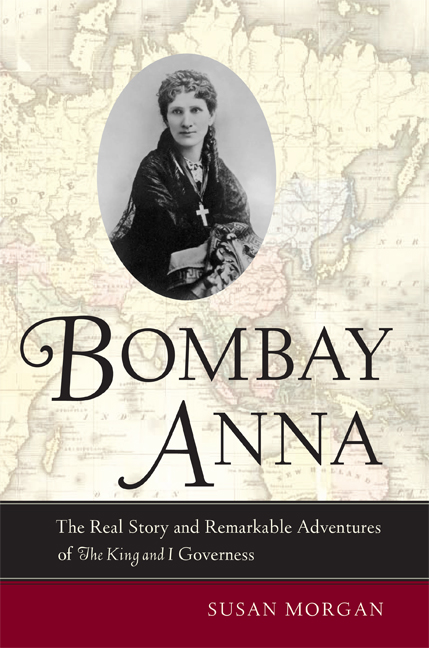 Bombay Anna, written by Susan Morgan, is another retelling of the life of Anna Leonowens. Morgan conducted in-depth research in the Kenneth and Margaret Landon papers seeking to reveal the history of this enigmatic figure. Anna’s origins have been less clear in years past and Morgan seeks through this volume to bring clarity to the situation. This was especially difficult because Leonowens was not truthful about her humble beginnings.
Bombay Anna, written by Susan Morgan, is another retelling of the life of Anna Leonowens. Morgan conducted in-depth research in the Kenneth and Margaret Landon papers seeking to reveal the history of this enigmatic figure. Anna’s origins have been less clear in years past and Morgan seeks through this volume to bring clarity to the situation. This was especially difficult because Leonowens was not truthful about her humble beginnings.
Despite her revelations to the contrary, Leonowens was born on November 26, 1831 Anna Harriett Emma Edwards in India to a British soldier and his young wife. Leonowens grew up in Army barracks amidst a diversity of ethnicities and cultures. It was a rather bleak beginning. Leonowens herself married young and continued the military connection until she found herself widowed with two small children. Leaving India Leonowens charted a new course for her life embellishing her pedigree and credentials to become the governess to the children of King Mongkut (Rama IV). It was this Anna that previous biographies have presented–an upper-class British woman who faced tragic loss before becoming a beloved governess in Siam. It is this Anna immortalized in the adaptation of Landon’s Anna and the King of Siam (1944) and later as Rodgers and Hammerstein’s 1951 musical The King and I.
Landon was hampered by wartime restrictions and limited access to Asian archives. Landon enjoyed great success from her book and its adaptation, which must have left her with feelings of ambivelance since she disliked Rodgers and Hammerstein’s final product. Morgan reveals more about Leonowens, in part because more primary sources have become available. Leonowens left Siam (modern-day Thailand) after five years and made her way to America where, Morgan says, another phase of embellishment began. She published The English Governess at the Siamese Court (1870) and The Romance of the Harem (1873) to the interest of many who wanted to learn of the exotic East. Leonowens later left New York for Canada, settling in Montreal and Halifax to spend time with her daughter and grandchildren.
Wheaton College’s Olympic Basketball Team
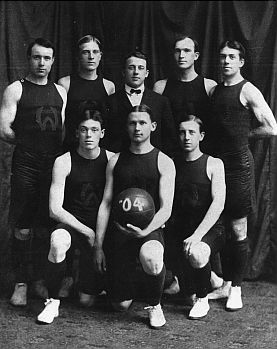 As Wheaton College begins its 2008-2009 basketball season the history of Wheaton’s basketball program should be remembered. The first time basketball appeared in the Olympics was 1904, held in Saint Louis, Missouri and was held as a demonstration sport and not for any medals. Four different levels of competition were held with Wheaton College participating in the College-level along with Hiram College and Latter Day Saints University (which no longer exists).
As Wheaton College begins its 2008-2009 basketball season the history of Wheaton’s basketball program should be remembered. The first time basketball appeared in the Olympics was 1904, held in Saint Louis, Missouri and was held as a demonstration sport and not for any medals. Four different levels of competition were held with Wheaton College participating in the College-level along with Hiram College and Latter Day Saints University (which no longer exists).
Of Wheaton’s intercollegiate sports, basketball has the longest consecutive record with competition occurring since 1901. The game had been invented only nine years earlier by Dr. James Naismith, an instructor in the YMCA College in Springfield, Massachusetts. Wheaton’s strong connection with the YMCA helped foster the adoption of this sport at the college. In 1899 the first Wheaton College gymnasium was built with a playing floor of 77 ft. by 36 ft. compared to the contemporary 94 ft. by 50 ft. 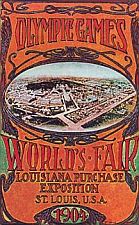 It was one of the finest gymnasiums in existence in the state at the time. Additionally, because of the quality of the facilities and its proximity to Chicago Wheaton became one of the first colleges to have varsity teams.
It was one of the finest gymnasiums in existence in the state at the time. Additionally, because of the quality of the facilities and its proximity to Chicago Wheaton became one of the first colleges to have varsity teams.
In 1904 Wheaton was invited to participate in the national college basketball tournament at the World’s Fair and Olympics in St. Louis, achieved by compiling the best winning percentage of any college in Illinois. The Olympics were originally to be held in Chicago but were combined with the Louisiana Purchase Exposition after extensive political wrangling.
The Wheaton team took second place to Hiram College of Ohio.
The Galloping Ghost, by Gary Andrew Poole, recently published
 Harold E. “Red” Grange is the most important figure in American football history. In 1924, playing for the University of Illinois, he scored four touchdowns in 12 minutes against Michigan. And so Grange, nicknamed “the Galloping Ghost” by Chicago sports writer Warren Brown, forever secured his reputation as a gridiron legend. Grange dazzled fans, inspired poetry, starred in films, and was the first celebrity product endorser. In 2008 he was ranked #1 on ESPN’s Top 25 Players in College Football History list. But who was the nation’s first football hero? From barnstorming tours to stadium rallies, from the White House to Hollywood, Gary Andrew Poole’s The Galloping Ghost, the first critical biography of “Red” Grange, chronicles the meteoric rise of this extraordinary athlete. Drawing on extensive research and interviews, Poole details not only Grange’s relationship with Bears manager George Halas and his later life as motivational speaker and tv sports commentator, but he also touches on the shadowy aspects of 1920s sports management, exploring the influence of Grange’s agent, the visionary but unscrupulous C.C. Pyle, known then as “Cash-and-Carry Pyle” and now as “the first Jerry Maguire.” The Galloping Ghost is an energetic, perceptive account of a star athlete who defined the finest qualities of American sportsmanship.
Harold E. “Red” Grange is the most important figure in American football history. In 1924, playing for the University of Illinois, he scored four touchdowns in 12 minutes against Michigan. And so Grange, nicknamed “the Galloping Ghost” by Chicago sports writer Warren Brown, forever secured his reputation as a gridiron legend. Grange dazzled fans, inspired poetry, starred in films, and was the first celebrity product endorser. In 2008 he was ranked #1 on ESPN’s Top 25 Players in College Football History list. But who was the nation’s first football hero? From barnstorming tours to stadium rallies, from the White House to Hollywood, Gary Andrew Poole’s The Galloping Ghost, the first critical biography of “Red” Grange, chronicles the meteoric rise of this extraordinary athlete. Drawing on extensive research and interviews, Poole details not only Grange’s relationship with Bears manager George Halas and his later life as motivational speaker and tv sports commentator, but he also touches on the shadowy aspects of 1920s sports management, exploring the influence of Grange’s agent, the visionary but unscrupulous C.C. Pyle, known then as “Cash-and-Carry Pyle” and now as “the first Jerry Maguire.” The Galloping Ghost is an energetic, perceptive account of a star athlete who defined the finest qualities of American sportsmanship.
Pulped Old Rags: some fine rare books in Special Collections
I love the press of letters in thick paper,
the roughness sizzles my fingers
with centuries of craft embedded in pulp old rags,
my hands caress the leather of old bindings
crumbling like ancient gentlemen.
Jerry Stern
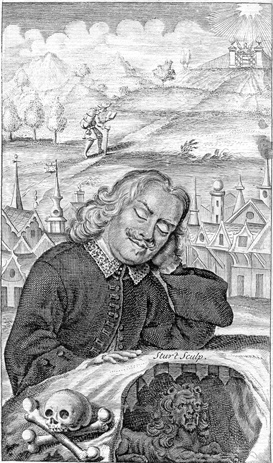 In this day of technology and rapid information service and growth many decry the soon extinction of the book. Ah, but when someone handles and, as the author of the above work states, caresses a fine rare book, one does not easily look to its demise. Books are wonders. They are thoughts distributed to the world. They are invitations to new possibilities and new horizons. Technology does not take this away, it merely supplements it.
In this day of technology and rapid information service and growth many decry the soon extinction of the book. Ah, but when someone handles and, as the author of the above work states, caresses a fine rare book, one does not easily look to its demise. Books are wonders. They are thoughts distributed to the world. They are invitations to new possibilities and new horizons. Technology does not take this away, it merely supplements it.
Special Collections has wondrous examples of the power of the book, as presenter of ideas and as art. Special Collections’ foundational collection, SC-01, was a gift from rare-book collector William Sanford Akin. His immense gift of thousands of books that are worth hundreds of thousands of dollars was given in the memory of his dear friend, V. Raymond Edman. This collection contains one of the most extensive collections of English dictionaries by Samuel Johnson in the country along with hundreds of editions of Bunyan’s Pilgrim’s Progress. This collection is a rich resource for the college.
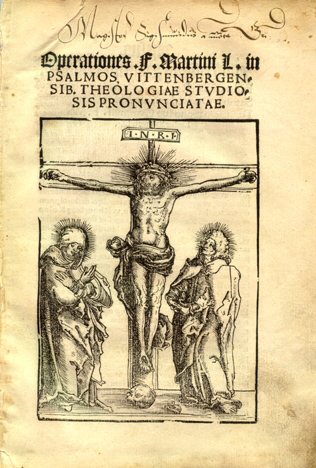 Another collection worthy of attention is the general Rare Book collection, SC-10. In this collection we have a treasure trove of unique items. The earliest item in our holdings is Operationes in psalmos by Martin Luther and published in 1519. This work was written while Luther was still within the Roman church struggling for reform and before he made his historic statement at the Diet of Worm in 1521, “Here I stand, I can do no other.” Another Luther item is Philipp Melancthon’s oration at Luther’s funeral. This is bound together with four sermons that Luther gave just prior to his death. Both were printed in Wittenberg in 1546, the year Luther died.
Another collection worthy of attention is the general Rare Book collection, SC-10. In this collection we have a treasure trove of unique items. The earliest item in our holdings is Operationes in psalmos by Martin Luther and published in 1519. This work was written while Luther was still within the Roman church struggling for reform and before he made his historic statement at the Diet of Worm in 1521, “Here I stand, I can do no other.” Another Luther item is Philipp Melancthon’s oration at Luther’s funeral. This is bound together with four sermons that Luther gave just prior to his death. Both were printed in Wittenberg in 1546, the year Luther died.
Is the book dead? By no means! Despite statements that books are soon to be ephemeral, the book is a symbol of longevity. Western culture is intrinsically tied to the written work, especially as exemplified in the book and its legacy of constancy is welcome in today’s world. Will communication methods change, certainly, as they have for centuries. However, there is nothing like caressing the “leather of old.” I’d urge you to visit the Special Collections and see the abundant storehouse of rare books awaiting you.